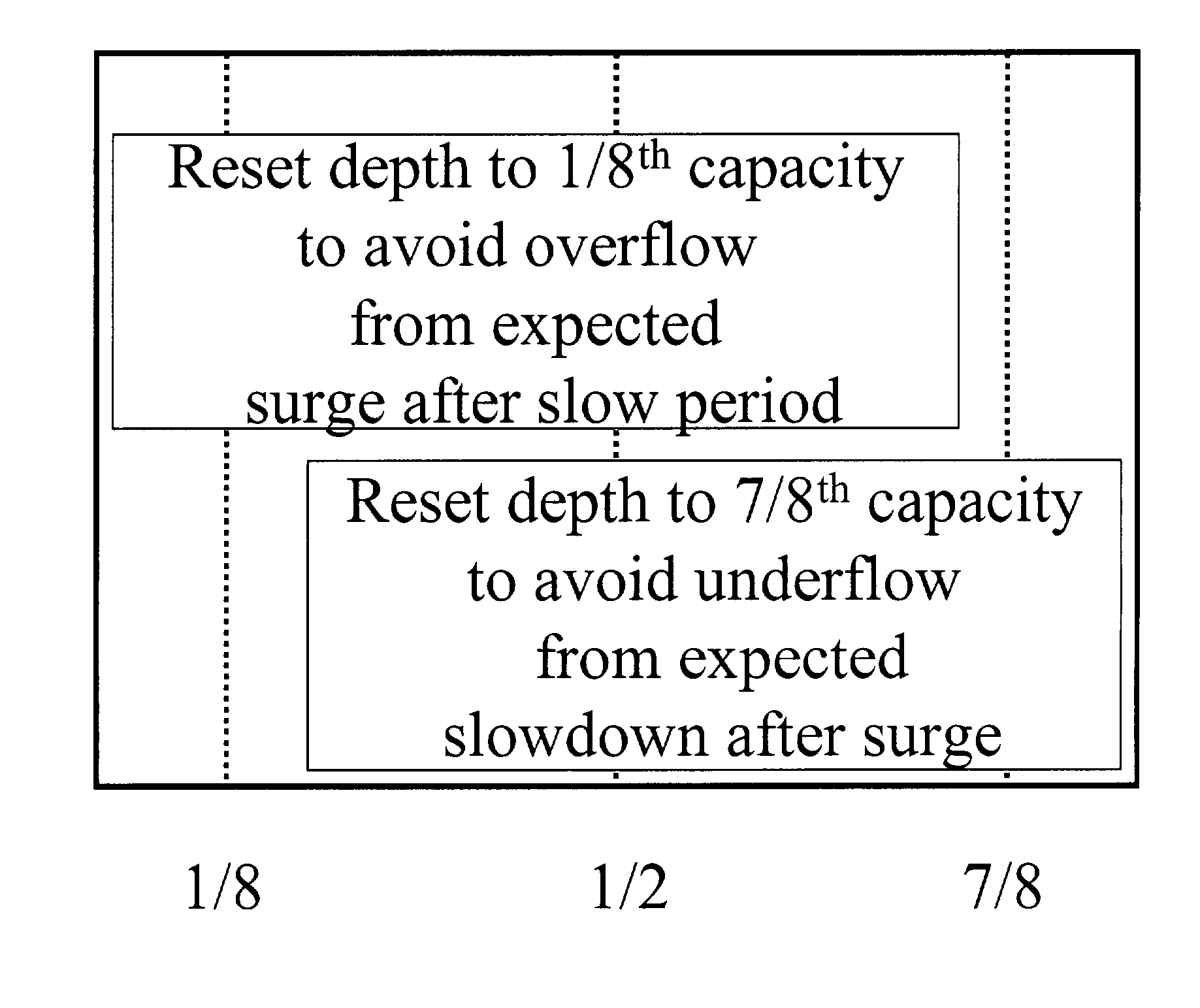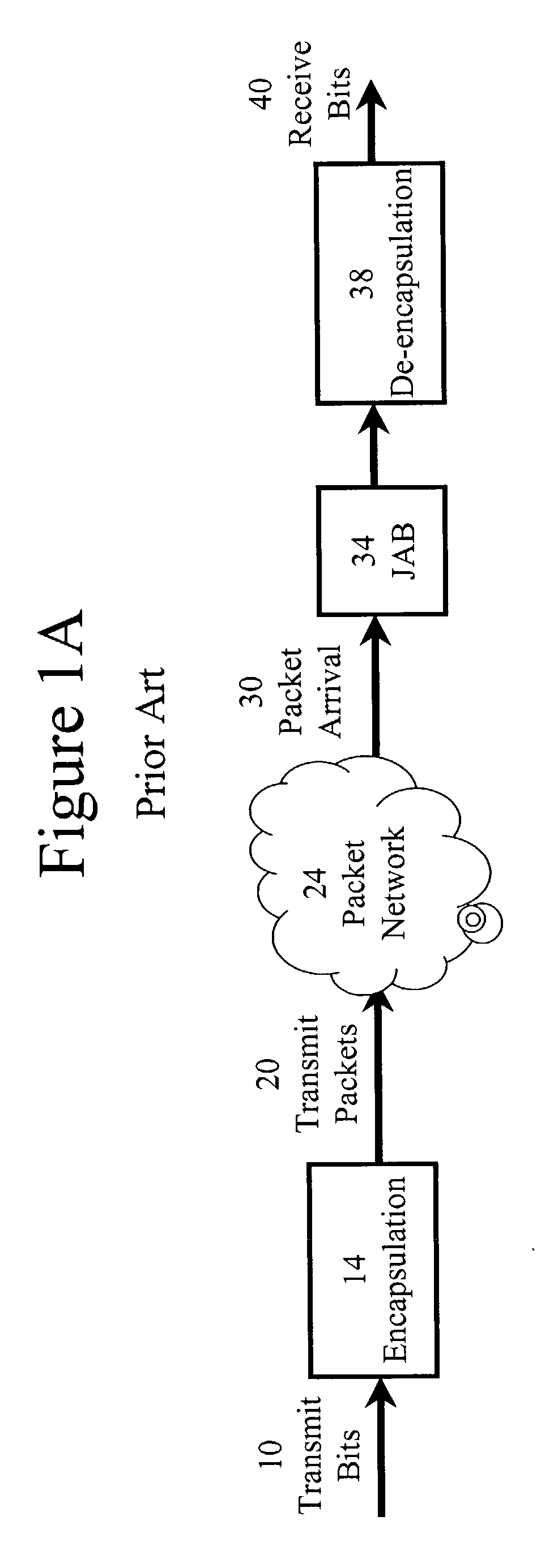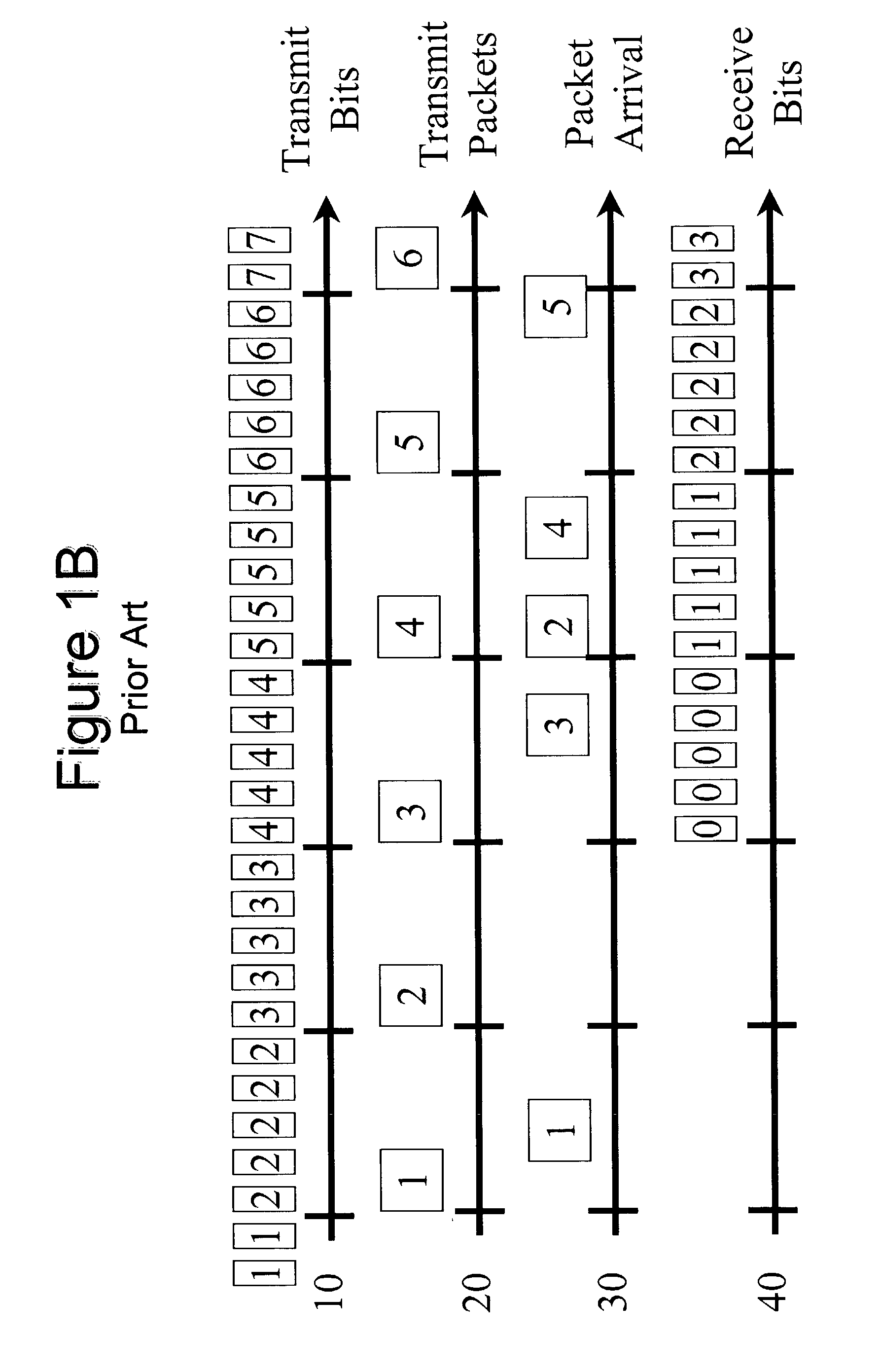Automatic adjustment of buffer depth for the correction of packet delay variation
a buffer depth and automatic adjustment technology, applied in the field of automatic adjustment of buffer depth for the correction of packet delay variation, can solve the problems of increasing the tolerance of apd and pdv, increasing the complexity of application, and reducing signal quality
- Summary
- Abstract
- Description
- Claims
- Application Information
AI Technical Summary
Benefits of technology
Problems solved by technology
Method used
Image
Examples
Embodiment Construction
[0040] Dynamically Adjust the Depth of the JAB to Correct PDV
[0041] Since a small JAB size leads to loss of packets and a large JAB size increases APD, JAB size becomes an important design choice. In contrast to prior art solutions with fixed JAB sizes, the approach of the invention is to dynamically size the JAB based on network conditions. The disclosed method takes into account the fullness of the JAB, as well as on PDV.sub.P, which is the peak-to-peak value of the PDV. One method for measuring PDV.sub.Pis disclosed in the co-pending '747 application referenced above.
[0042] The general rules for changing the size of the JAB are:
[0043] If the JAB is almost empty or almost full, then re-center the JAB by modifying the output clock rate.
[0044] If the JAB overflows or underflows, or if the PDV.sub.P is high, then rapidly increase the size of the JAB.
[0045] If the JAB is not almost empty or almost full, and if PDV.sub.P is low for a sustained period of time, then re-center the JAB on ...
PUM
 Login to View More
Login to View More Abstract
Description
Claims
Application Information
 Login to View More
Login to View More - R&D
- Intellectual Property
- Life Sciences
- Materials
- Tech Scout
- Unparalleled Data Quality
- Higher Quality Content
- 60% Fewer Hallucinations
Browse by: Latest US Patents, China's latest patents, Technical Efficacy Thesaurus, Application Domain, Technology Topic, Popular Technical Reports.
© 2025 PatSnap. All rights reserved.Legal|Privacy policy|Modern Slavery Act Transparency Statement|Sitemap|About US| Contact US: help@patsnap.com



